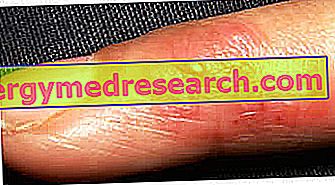
"Data on the Focus on Drugs - Briefing of the European Monitoring Center for Drugs and Drug Addiction" - emcdda.europea.eu
The hallucinogenic mushrooms, also known as magic mushrooms, are natural products (not synthetic, as could be an acid, exstasis, crack etc.) containing certain molecules capable of inducing real hallucinations.
Mushroom species commonly used for psychoactive purposes contain psilocybin and psilocin, while others less common (the so-called " ovolacci ") contain muscimol and ibotenic acid . NB . Those that contain muscimol are considered highly toxic.
In short, the most common types of magic mushrooms are: of the genus Psilocybe (especially the Specie cubensis ) and of the genus Panaeolus (especially the Specie cyanescens ).
The currently known hallucinogenic mushrooms are more than 100 different species, most of which belong to the first of the two groups mentioned. Usually, these are small mushrooms, light brown in color, easily confusable with other non-psychoactive and non-toxic species of fungi.
Compared to cannabis use, in the EU, that of hallucinogenic mushrooms is much more contained; a statistic of 12 Member States analyzed a sample aged between 15 and 24 years, in which there was a percentage ranging from <1% to 8%. In some countries, among 15-16 year olds, the use of hallucinogenic mushrooms has proved to be comparable to that of ecstasy, but lower than that of stimulant drugs such as cocaine and amphetamine (and in any case irregular).
The availability of these products is quite good and, at the end of the 1990s, there was a significant increase in their consumption thanks to the diffusion of Smart Shops (flea markets), typical of the Netherlands and the United Kingdom; it seems that for these activities, the sale of magic mushrooms has reached 50% of total revenues.
The sales outlets authorized for the marketing of these products are bound both by the tax (tax) point of view and by that of information on health risks (rather variable from one place to another). However, the number of claims for lethal and non-lethal emergencies is very low (generally related to the mixture with other drugs and / or alcohol). Usually, the psychoactive reactions attributable to the consumption of magic mushrooms vanish rather quickly; at the limit, they can cause dizziness, nausea, weakness, muscle pain, tremor, abdominal pain, dilation of the pupils, mild or moderate increase in heart and respiratory rate, and high blood pressure.



